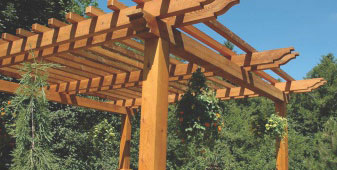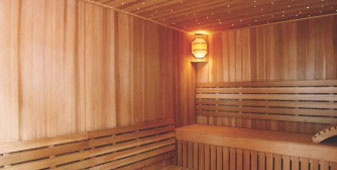

Western red cedar is the official tree of the Province of British Columbia (B.C.), Canada. The largest living tree in Canada is a western red cedar with a 5.9 metre diameter. Because of its natural decay resistance dead red cedar trees can remain sound in the forest for over 100 years!
Hot-dipped galvanized or stainless steel nails are essential for use with western red cedar as the acidity of the extractives in the wood can accelerate the corrosion of metals and leave a black stain when the wood is wet. Stainless steel, brass, aluminium, copper or metals with a protective coating must be used when applying fittings, fixtures or fasteners to western red cedar products.
Western red cedar is a fairly lightweight wood, which is moderately soft and low in strength. It is known for its excellent working properties, resulting in a smooth, satiny finish using sharp tools. It has good machining qualities, planes and shapes well and can be sanded to a smooth finish. The wood glues easily, has moderate nail and screw holding ability and polishes well.
| Stiffness / MOE (MPa) | Air dry | 8200 |
| Strength / MOR (MPa) | Air dry | 54 |
| Density (KG/M3) | Air dry | 339 |
| Compression Parallel (Mpa) | Air dry | 33.9 |
| Shear (Mpa) | Air dry | 5.58 |
| Shrinkage (air dried-12%) | Tangential/radial ratio | 2.1 |
| Title | Process | Performance | Comments |
|---|---|---|---|
| Machining | Planing | Good to average | Recommended planer settings:20° hook 8,12,16, or 20 kmpi (knife marks per inch) |
| Shaping | Good | Splintering on the end grain and may sometimes be an issue. Recommended: the use of a counter piece for the end grain shaping | |
| Sanding | Excellent | ||
| Fastening | Screwing | Good | |
| Nail retention | Average | ||
| Gluing | Good | Bonds satisfactorily with good quality adhesives under a moderately wide range of bonding conditions | |
| Finishing | Staining | Good | Very smooth texture achieved, but sometimes difficult to hide the natural texture of wood. Very soft wood that loses some grain design as stain becomes darker |
| Drying | Ease of drying | Good | The drying of thin boards is generally easy with very little degrade occuring |
| Durablity | Natural termite and decay resistance | Good | Appropriate for outdoor usage |
C/O Shri Kavish Resources PTE LTD 1003 Bukit Merah Central #06-07 Singapore 159836
